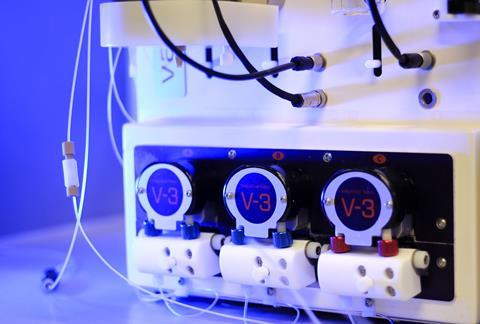Rare example of a novel photocatalyst that can break the carbon–hydrogen bonds of methane and other light alkanes
Download this
Use the starter slide with your class for teaching organic chemistry, alkanes, carbon–hydrogen bonding.
Download this
Use the starter slide with your class: rsc.li/3ePCkZL
Chemists have discovered a tungsten photocatalyst that breaks the nearly inert carbon–hydrogen bonds of methane and other small alkanes at room temperature.
Methane and other light hydrocarbons are usually disregarded as substrates for C–H activation reactions for two reasons: they are gases (inconvenient to work with) and they are nearly inert towards any but the harshest conditions. There are two strategies to convert small alkanes into value-added molecules. One is to heat them up to at least 500°C. The other is to convert them into haloalkanes, which again requires extreme temperatures, as well as toxic and corrosive chlorine or bromine gas.

In the new process, the gaseous hydrocarbons are fed into a flow reactor, where the catalyst creates alkyl radicals at room temperature. These then react with alkenes. This is a rare example of directly using natural gases as reagents.
Given how cheap and readily available light alkanes are, there is a lot of untapped potential for their use as starting materials.
Read the full story in Chemistry World.
Put this in context
Add context and highlight diverse careers with our short career videos showing how chemistry is making a difference and let your learners be inspired by chemists like Stephen, a director supporting businesses to become more sustainable.
Downloads
Starter slide - Making alkanes reactive
Presentation | PowerPoint, Size 0.21 mbStarter slide - Making alkanes reactive
Presentation | PDF, Size 0.15 mb









No comments yet